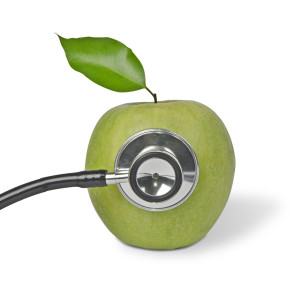** Consumer Groups allege Chicken was laced with “Special K” in False Advertising Case ** 
By: Brent E. Johnson
The “Food Court” (aka the Northern District of California) has seen many unique lawsuits over the years, some of which we have reported on. Currently pending before the court is a must-watch dispute between Sanderson Farms Inc. (the #3 poultry producer in the U.S.) and three consumer and environmental non-profits — not only because of the bitter feud between the parties, but because of the fascinating intersection between a relatively unknown USDA program and its overseers and consumer expectations of what “100% Natural” means in the advertisement of meat products.
The battle began on June 22, 2017, when Organic Consumers Association, Friends of the Earth, and Center for Food Safety filed suit, on behalf of themselves and the general public, against Sanderson claiming that testing conducted by the Food Safety and Inspection Service (“FSIS”) of the United States Department of Agriculture (“USDA”) in 2015 and 2016 under the National Residue Program showed that Sanderson’s chicken “contain[s] residues of antibiotics important for human medicine, residues of veterinary antibiotics, and other pharmaceuticals, as well as residues of hormones, steroids, and pesticides.” Organic Consumers Association et al v. Sanderson Farms, Inc., No. 3:17-cv-03592-RS (N.D. Cal. June 22, 2017) Dkt. No. 1 at ¶ 2. The consumer watchdogs alleged that these chemicals are “not natural.” Id. at ¶ 5. Moreover, the alleged presence of the chemicals in Sanderson’s chicken meat “strongly indicate[s] that the birds are raised in intensive-confinement, agro-industrial conditions where cruelty is inherent,” which runs counter to consumer expectations that “All Natural” includes the concept that the chickens are “humanely raised.” Id. at ¶ 71.
Plaintiffs did not simply file a lawsuit, however. They launched a public opinion campaign against Sanderson. This effort included approaching large commercial purchasers of Sanderson’ poultry (Darden Restaurants, Olive Garden) to educate them concerning the company’s alleged practices in an effort to dissuade them from purchasing chicken raised with antibiotics.
Sanderson struck back with a motion to dismiss asserting that Plaintiffs lacked standing and their complaint was pre-empted by the Poultry Products Inspection Act (“PPIA”) and Federal Meat Inspection Act (“FMIA”). Dkt. No. 23 (August 2, 2017); Dkt. No. 32 (September 13, 2017). On February 9, 2018, the district court denied the motion. It dispatched with Sanderson’s standing argument, holding that the diversion of Plaintiffs’ resources from their core public interest mission [i.e., to protect consumers’ right to safe, pollutant free food] to combating the alleged misrepresentations by Sanderson was sufficient injury to confer organizational standing. Dkt. No. 48 at 6 – 7. On pre-emption, the court ruled that there was no express pre-emption and implied pre-emption was not mandated because “[a]llowing plaintiffs to proceed with their advertising claims in no way undermines the PPIA’s [and FMIA’s] objectives of ensuring that poultry products are ‘wholesome, not adulterated, and properly marked, labeled, and packaged.’” Id. at 9. When Sanderson pointed out that the “100% Natural” wording on its label was specifically approved by USDA (as is true with the labels for all meat, poultry, and fish in the U.S.), the court responded that “common sense suggests even ‘language that is technically and scientifically accurate on a label can be manipulated in an advertisement to create a message that is false and misleading to the consumer.’” Id.
It’s at this point that things got nasty. A quick bit of background: the Plaintiff non-profits obtained the testing data upon which they based their complaint from USDA via multiple Freedom of Information Act (“FOIA”) requests. According to the complaint, the test data revealed that FSIS conducted 69 inspections of Sanderson’s products in 2015-2016, and in 49 cases residue of synthetic drugs, antibiotics (including antibiotics for human use), and pesticides were found. Dkt. No. 1 at ¶ 2. The chemicals in some of the poultry tested were revelatory; for example, Ketamine – a Schedule III anesthetic used legally to induce a trance-like state at the beginning of general anesthesia and illegally (as “Special K,” “Cat Valium,” and “Jet”) as an hallucinogenic and date rape drug. There is, of course, no sane reason for poultry producers to slip Special K into their chickens’ water troughs. Plaintiffs produced this FSIS test results to Sanderson at the time they filed their successful opposition to the Company’s motion to dismiss. According to Sanderson, the results showed negative levels of residue for some 40 chemicals tested – an obvious impossibility. As for chemicals with positive test results, the levels were below the FSIS’s detection limits or Minimum Levels of Applicability (“MLA”). For example, at least some poultry tested positive for Ketoprofen (an NSAID) – but at a level (less than one part per billion) far below the minimum levels of detection established by USDA in its own testing protocol —20 parts per billion (for poultry kidney screening) or 5 parts per billion (for muscle screening). Dkt. No. 49 at 8.
Sanderson was surprised that the FSIS test results were the basis of Plaintiffs’ allegations because “Sanderson has consistently passed FSIS residue testing, which has shown no antibiotic residue or other contaminants in its chicken products, including on the very test dates and locations identified by Plaintiffs in their Complaint.” Dkt. No. 49 at 12. Sanderson’s surprise turned to apoplexy when it discovered that Plaintiffs communicated extensively with USDA and FSIS regarding the test results prior to filing the complaint and were told by the agency that the test results did not reflect the presence of the identified chemicals, but were “preliminary screening data” that had not been confirmed. Id. at 5.
Based on these facts, Sanderson filed a motion for Rule 11 sanctions against Plaintiffs stating that “[t]he problem with Plaintiffs’ storyline is that [its] allegations are entirely false—and Plaintiffs and their attorneys know it.” Id. at 5. In a rare move, USDA’s Office of General Counsel approved Sanderson submitting the declarations of two FSIS officials, Dr. J. Emilio Esteban, Executive Associate for Laboratory Services, and Mark R. Brook, a Government Information Specialist for FSIS, in support of Sanderson’s sanctions motion. Dr. Esteban’s declaration stated that in a teleconference with Plaintiffs’ attorneys, he explained that, in addition to the test results being “preliminary screening data,” “all of the findings in the screening tests . . . were ultimately confirmed as ‘non-detected.’” Dkt. No. 49, Ex. 1. Mr. Brooks swore in his declaration that, upon learning of the filing of the complaint, he spoke with a deputy director at FSIS who participated in conference calls with Plaintiffs and she opined that Plaintiffs’ “seemingly intentionally ignored the explanations of the FOIA data that the USDA/FSIS scientists had provided on the recent conference calls.” Dkt. No. 49, Ex. 2.
Plaintiffs’ opposition to the sanctions motion spends a significant portion of its page limit suggesting some sort of “undue influence” by Sanderson Farms over USDA. (“Sanderson has admitted to contacting USDA in autumn 2017, and perplexing events began to occur around the same time.”) Dkt. No. 55 at 6 – 7. That argument (if it is an argument) is likely to go nowhere. On the merits, Plaintiffs argue that Sanderson “conflat[es] regulatory standards with scientific standards” (which is a bit frightening, if one thinks about it). Id. at 13 – 14. Relatedly, Plaintiffs contend that the issue of the interpretation of the data it received from FSIS is a question for experts — not one to be resolved by the district court on a motion for sanctions. Id. at 15 – 16. Finally, Plaintiffs assert that Sanderson’s admitted use of antibiotics belies any notion that its poultry is “100% Natural” and suggests that its chickens “are not raised as portrayed in Sanderson advertising and referenced in the [complaint].” Id. at 16.
What is it about the living conditions that Plaintiffs argue runs contrary to Sanderson’s USDA approved “100% Natural” label? For Sanderson’s answer, one can consult Bob and Dale, the Sanderson spokesmen in their “The Truth About Chicken” advertising campaign”. What Bob and Dale want you to know is that FDA has never approved the use of steroids or hormones in chickens and USDA does not allow poultry meat to be sold if it is not clear of antibiotics. Therefore, any company that labels its poultry products as “hormone free” or “antibiotic free” in the United States is akin to Ford advertising that its cars and trucks have wheels. It’s a redundancy. While Plaintiffs argue that these advertisements are false and misleading — and assuming that Sanderson and the FSIS officials who submitted declarations are correct that the company’s poultry meat does not contain the chemicals alleged in the complaint — the case seems to boil down to the claim that, for a chicken to be “100% Natural,” a veterinarian can never have administered antibiotics to it (irrespective of whether the antibiotics are present at the time of sale).
The hearing on Sanderson’s motion for sanctions is set for April 5, 2018. Rule 11 motions are notoriously difficult to win. But in this case, Plaintiffs will be arguing that not only should the USDA’s approval of the Company’s “100% Natural” label be disregarded (as the court has already determined), but the USDA’s interpretation of its own test data as well. It will be interesting to see if USDA has anything further to say on those issues.


 Judge Lucy H. Koh gave all natural class defendants cause for celebration back in 2014 when she closed the door on a putative class representative’s claim that Dole’s fruit juices and fruit cups were wrongfully labelled as “All Natural.” Brazil v. Dole Packaged Foods, LLC, No. 12-CV-01831-LHK, 2014 WL 6901867 (N.D. Cal. Dec. 8, 2014). Last week, however, the Ninth Circuit re-opened that door slightly – at least enough for the plaintiffs’ bar to try to squeeze their feet in.
Judge Lucy H. Koh gave all natural class defendants cause for celebration back in 2014 when she closed the door on a putative class representative’s claim that Dole’s fruit juices and fruit cups were wrongfully labelled as “All Natural.” Brazil v. Dole Packaged Foods, LLC, No. 12-CV-01831-LHK, 2014 WL 6901867 (N.D. Cal. Dec. 8, 2014). Last week, however, the Ninth Circuit re-opened that door slightly – at least enough for the plaintiffs’ bar to try to squeeze their feet in. We have blogged in the past about some of the “usual suspects” in the consumer class action line-up – particularly for food, beverage, cosmetics and related industries – for example, the
We have blogged in the past about some of the “usual suspects” in the consumer class action line-up – particularly for food, beverage, cosmetics and related industries – for example, the 

